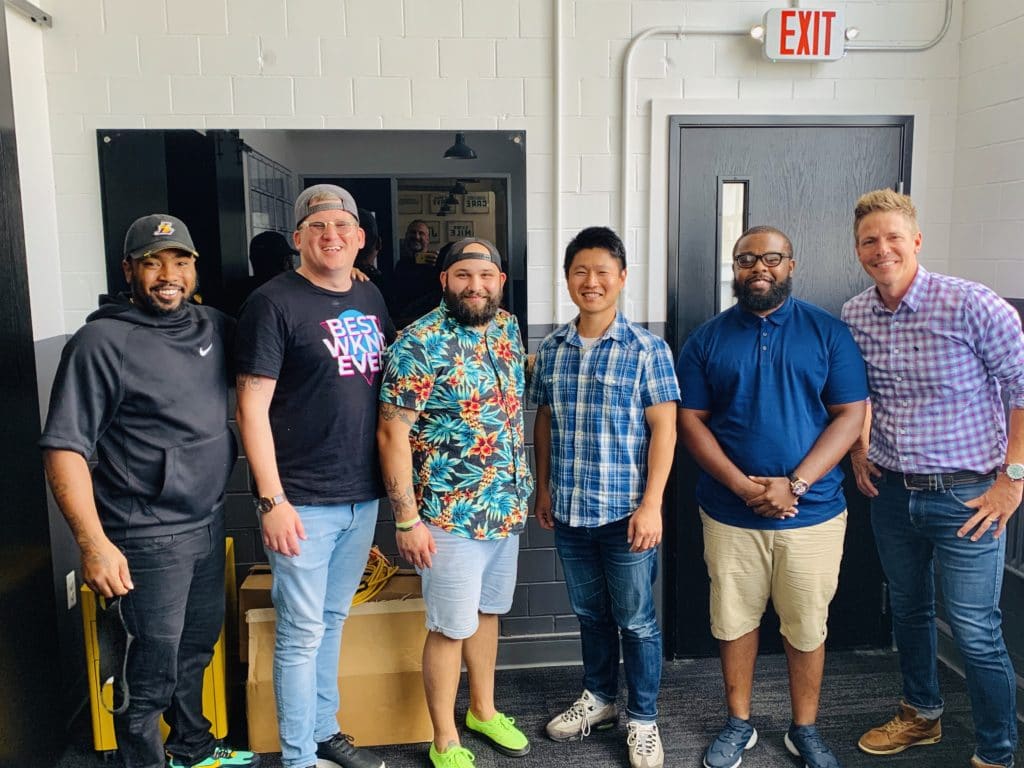What do multi-million-dollar franchise businesses and church planting have in common? Perhaps not the dollar signs, but there are more similarities than you think.
In 2015, Travis Whittaker, lead planter and pastor of Mile City Church, didn’t plant alone. He had the help of his family, his Sending and Support Churches and Shea Prisk, his apprentice.
“If every church planter could have an apprentice—which we now call a resident—I’d highly recommend it. It’s a ‘follow me as I figure this thing out’ kind of model,” said Whittaker. “When you’re a small church plant, you’re small enough where your apprentice or resident is with you in the daily grind of planting. Shea Prisk watched me. He really launched Mile City Church with me.”
SENDING OUT A RESIDENT
Eventually, Prisk was sent out, and he launched Grumlaw Church, now one of the largest Southern Baptist Convention (SBC) churches in Michigan. From there, Mile City Church kept growing, and they kept planting.
“We launched our first church in year two, and then it just kept happening. Now, we’ve launched five churches in five years. Right now, we have three planters in our residency, and one is our first home-grown planter — meaning he was baptized, discipled and will plant through our ministry,” Whittaker explained.
But as Mile City Church grew, Whittaker knew he couldn’t have multiple residents following him around like Shea had. He interviewed Shea and asked him about his experience—the pros, the cons, what was helpful, etc. He compiled his findings into a checklist and gathered more items from others, adding to the checklist.
“As we matured, I realized we needed to write down what we were doing and had to figure out more of a plan. Once I interviewed Shea and created our residency checklist, I knew we still needed to formulate it more,” said Whittaker.
A SIMPLE IDEA
Mike Skitzki, a co-founder of REACH Strategic Partners (a management consulting company that helps businesses franchise), also a member at Whittaker’s church, saw what Whittaker was doing and offered his expertise.

Over a cup of coffee, Whittaker and Skitzki talked about their respective professions. Skitzki quickly recognized similarities between the challenges faced by the franchise leaders he worked with and those faced by church planting leaders. While they use different vocabulary and have different goals, their struggles are universal, and perhaps their solution could be, too.
The looming question for both types of leaders is this: How does one systematize and scale what they’ve learned to teach someone else, so they can replicate it?
“Travis and I asked a crazy question: What if we started to take some of the tools that some of the fastest-growing franchises have successfully used over the last decade — duplicating their founder’s vision, processes, tips of the trade, etc. — and we applied it to church planting,” Skitzki said.
Thus, the beginnings of the 1:11 Residency was conceived. It’s a tool that helps pastors and planters feel confident about training their residents.
THE SLOW, EXCITING CLIMB
Entrepreneurs of any type — even church planters — are excited to begin their journey. But it’s the kind of excitement you get when you’re slowly ascending a rollercoaster: mostly eager, but there’s the unmistakable knot of anxiety gurgling around with the excitement.
“The best way to help someone who has that feeling is for a coach or mentor to provide a process and a clear set of expectations. That helps you enjoy the ride a bit more,” said Skitzki. “The 1:11 Residency process is a map, a dynamic tool to help planters along the way.”
With church planting, you can begin to categorize things into efforts that will inevitably need to be done, like setting up an email address, running a management team or how to back up a trailer. And if you have to explain something you do a few times, you’ll likely have to explain it another 30, and it’s worth writing down for future residents and planters.
“My residents aren’t with me all the time now, but with 1:11, in a meeting with a planter, I can look at the breakdown, figure out where we are in the process and know what we need to talk about,” Whittaker said.
STONE SOUP
The 1:11 program is like the European folklore Stone Soup—a story where a traveler convinces the townspeople to contribute to a soup everyone eventually enjoys. Pastors and church planters have added their own best practices to 1:11, making it a richer resource.
“The 1:11 Residency program isn’t the stone soup, it’s just the pot. It’s a way for people to collaborate. Everyone contributes to it and gets to enjoy it. It’s similar with franchising. If there’s a secret to success in franchising, it’s that the franchisor creates the system, but the franchisee contributes the best practices,” explained Skitzki.
Whittaker, Skitzki and Mile City Church want the 1:11 program to benefit church planting residencies throughout the country. And so far, it has.
“Residencies help planters go further faster, and it helps them hit the target in a healthy way. That’s what we hope the 1:11 Residency program continues to do — in Mile City Church and beyond,” said Whittaker.
The 1:11 program is not yet available to the public. For more information about this resource, email [email protected].
To learn more about starting a residency at your church, visit SendNetwork.com/Residencies.
Published February 19, 2021
